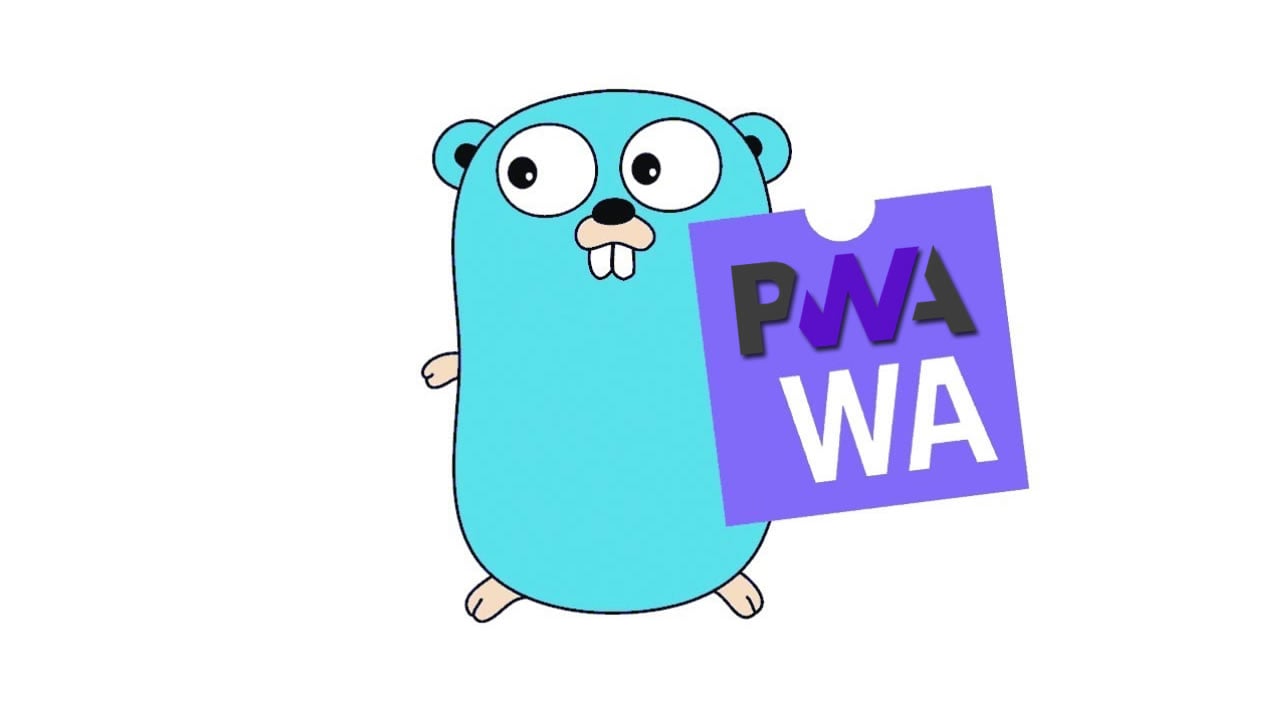Build PWA with Go and WebAssembly
go-app is a package to build progressive web apps (PWA) with Go programming language and WebAssembly.
It uses a declarative syntax that allows creating and dealing with HTML elements only by using Go, and without writing any HTML markup.
The package also provides an http.handler ready to serve all the required resources to run Go-based progressive web apps.
Install
go-app requirements:
# Init go module (if not initialized):
go mod init
# Get package:
go get -u -v github.com/maxence-charriere/go-app/v6
How it works
- Users: The users of your app. They request pages and resources from their web browser.
- app.Handler: An http.Handler used by your server or cloud function. It serves your app, its static resources, and all the required files to make it work on user browsers.
- Application: Your app built with this package. It is built as a WebAssembly (.wasm) binary and is served by the app.Handler.
- Other static resources: Styles, images, and scripts used by your app. They are also served by the app.Handler.
Declarative syntax
go-app uses a declarative syntax so you can write component-based UI elements just by using the Go programming language.
package main
import "github.com/maxence-charriere/go-app/v6/pkg/app"
type hello struct {
app.Compo
name string
}
func (h *hello) Render() app.UI {
return app.Div().Body(
app.Main().Body(
app.H1().Body(
app.Text("Hello, "),
app.If(h.name != "",
app.Text(h.name),
).Else(
app.Text("World"),
),
),
app.Input().
Value(h.name).
Placeholder("What is your name?").
AutoFocus(true).
OnChange(h.OnInputChange),
),
)
}
func (h *hello) OnInputChange(src app.Value, e app.Event) {
h.name = src.Get("value").String()
h.Update()
}
func main() {
app.Route("/", &hello{})
app.Route("/hello", &hello{})
app.Run()
}
The app is built with the Go build tool by specifying WebAssembly as architecture and javascript as operating system:
GOARCH=wasm GOOS=js go build -o app.wasm
Note that we named the build output app.wasm. The reason is that the HTTP handler requires the web assembly app to be named this way in order to be served.
HTTP handler
Once your app is built, the next step is to serve it.
This package provides an http.Handler implementation ready to serve your PWA and all the required resources to make it work in a web browser.
The handler can be used to create either a web server or a cloud function (AWS Lambda, GCloud function or Azure function).
package main
import (
"net/http"
"github.com/maxence-charriere/go-app/v6/pkg/app"
)
func main() {
h := &app.Handler{
Title: "Hello Demo",
Author: "Maxence Charriere",
}
if err := http.ListenAndServe(":7777", h); err != nil {
panic(err)
}
}
The server is built as a standard Go program:
go build
Note that you need to add app.wasm to the server location. The reason is that app.Handler is looking for a file named app.wasm in the server directory in order to serve the web assembly binary.
hello-local # Server directory
├── app.wasm # Wasm binary
├── hello-local # Server binary
└── main.go # Server code
Live apps
#pwa #go #webassembly #wasm
